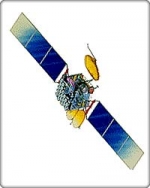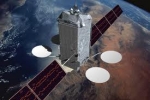Displaying items by tag: hardware
Omnisys Instruments
Omnisys Instruments main operations are development and production of high performance electronics hardware, mainly for space industry but also for other scientific, security and medtech applications.
Omnisys two major business areas are:
- Power systems for satellites.
- THz range scientific radiometer instrumentation.
Semiconductors for Space products
Semiconductors for Class V Space Flight / Satellite Products.
To support the demanding nature of space applications the TI and National product lines are combined to create a strong product portfolio. Customers will not experience any disruption of service and all TI and National products will continue to be available. By combining these portfolios TI provides a complete signal chain solution for space systems.
Customers can be assured of:
- Extended Product Life Cycle
- No Part Number Changes
- No Requalification
- Continued National Wafer Fab Operation
- Continued new product development
Texas Instruments supports space applications with MIL-PRF-38535 QML Class V components.
APCO Technologies
APCO Technologies is specialised in the design and manufacture of high quality mechanical and electromechanical equipment for the space, and nuclear industries. APCO Technologies is mainly project oriented and provides solutions to customer's specific requirements.
APCO Technologies performs feasibility studies, thermal and mechanical analysis, detailed design, hardware development, as well as the manufacturing, integration and testing of the equipment it develops.
COM DEV International
COM DEV International Ltd. is a global designer and manufacturer of space hardware.
COM DEV is a leader in the production of space-qualified passive microwave equipment, specialized electronics and optical subsystems. In 2012 the company has over 1,100 employees at facilities in Canada, the United Kingdom and the United States.
Boeing 601 satellite
The Boeing 601 satellite is a body-stabilized geostationary satellite.
The Boeing 601 was introduced in 1987 to meet anticipated requirements for high-power, multiple-payload satellites for such applications as direct television broadcasting to small receiving antennas, very small aperture terminals for private business networks, and mobile communications. The basic configuration features as many as 48 transponders and offers up to 4,800 watts.
A more powerful version, the Boeing 601HP, made its debut in 1995. The HP versions can carry payloads twice as powerful as the classic Boeing 601 models, through such innovations as gallium arsenide solar cells, advanced battery technology, and an optional xenon ion propulsion system. The 601HP features as many as 60 transponders and provides up to 10,000 watts.
All Boeing 601 spacecraft use the same basic bus design, enabling Boeing to realize efficiencies gained by production volume, tooling investments and quantity buys.
Boeing 702 satellite
The Boeing 702 satellite is a family of geostationnary satellites designed and manufactured by the company Boeing.
Its design requirements include lower cost and high reliability. It offers a broad spectrum of modularity. A primary example is payload/bus integration. After the payload is tailored to customer specifications, the payload module mounts to the common bus module at only four locations and with only six electrical connectors. This design simplicity confers advantages. First, nonrecurring program costs are reduced, because the bus does not need to be changed for every payload, and payloads can be freely tailored without affecting the bus. Second, the design permits faster parallel bus and payload processing. This leads to the third advantage: a short production schedule.
Further efficiency derives from the 702's advanced xenon ion propulsion system (XIPS), which was pioneered by Boeing. XIPS is 10 times more efficient than conventional liquid fuel systems. Four 25-cm thrusters provide economical stationkeeping, needing only 5 kg of fuel per year - a fraction of what bipropellant or arcjet systems consume. Using XIPS for final orbit insertion conserves more mass as compared to using an on-board liquid apogee engine. Customers can apply the weight savings to increase the revenue-generating payload, to prolong service life, or to change to a less expensive launch vehicle (when cost is based on satellite mass).







